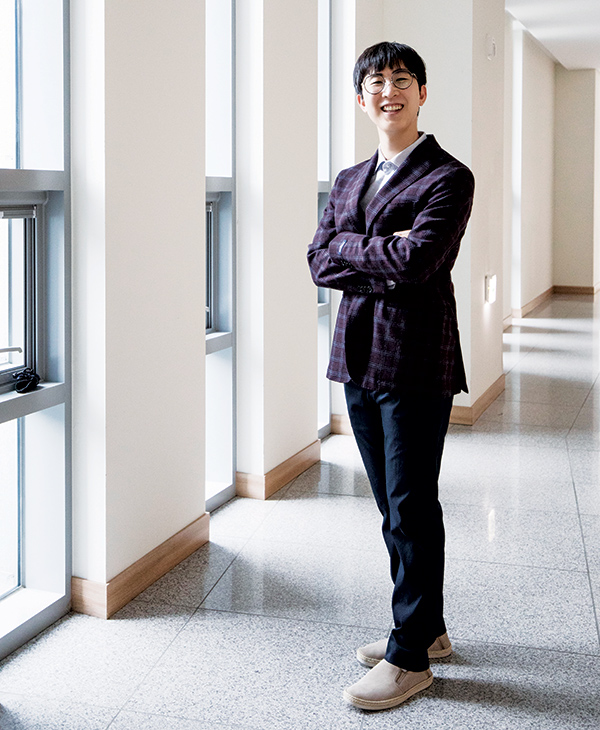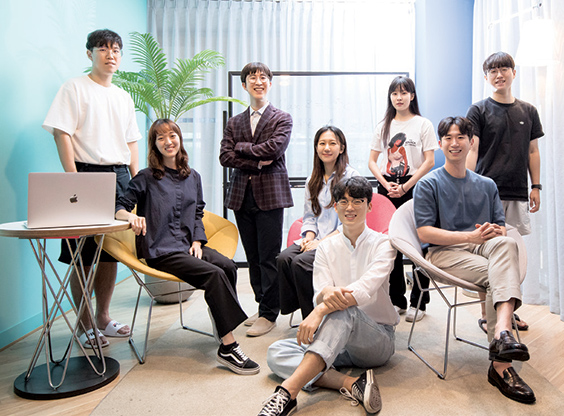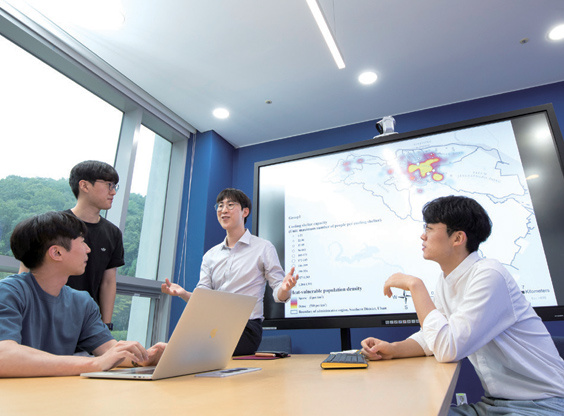
- MEET 2
- Optimum location for heat eave shelter at Ulsan Namgu
proposed by professor Kwon Sang-Jin and his research team
content area
Hoping heat wave will no longer
be a disaster for the vulnerable
Optimum Location for Heat Wave Shelter at Ulsan Namgu
Proposed by Professor Kwon Sang-Jin
and His Research Team
- Story by Editorial Room, Photo by Kim Beom-Ki

“Under a situation in need of active policy countermeasures to prevent the vulnerable from further suffering due to heat disaster, we expect the present research to play a critical role as a practical alternative that reflects limitations on the ground.”
The continued scorching heat with abnormal high temperature could cause hypothermia of heatstroke and heat cramps and even lead to death. It is classified as a natural disaster that causes damage to human life and property. According to the Center for Disease Control, severe heat wave has caused several deaths every year in recent times. The number of patients with hypothermia has been increasing rapidly as well.
In the case of heat waves, the correlation in the gap between rich and poor with vulnerability to the disaster is higher than those with other disasters, so we may reduce the damage by economic and social support. In order to minimize such damage, a Heat Wave Shelter is being operated at various places. It is a facility that supports elderly people, children and other vulnerable groups in spending the summer in a comfortable setting. Mostly, it is installed at centers for senior citizens, village halls, community service centers, and centers for children. According to the Ministry of Public Administration and Safety, as of July 2021, there are 51,689 heat wave shelters in operation nationwide.
Meanwhile, the optimization laboratory led by Professor Kwon Sang-Jin of the Department of Industrial Engineering has presented meaningful research outcomes. Led by the graduate student Woo Seong-Ok, graduate students Yoon Seok-Ho and Kim Jae-Sung have participated in the research and found optimum locations for the heat wave shelter at Ulsan Namgu and proposed a strategy to accommodate the optimum number of people at the shelters.
The core of the present research is to analyze the groups that are vulnerable to the extreme heat accurately based on real-time data and find an optimum location. The research will also strive to utilize the mathematical model in order to increase the number of occupants and minimize the operation costs. Previous researches on facilities in preparation for the extreme hot weather used the data from population surveys to predict those who are vulnerable to the scorching heat in peak summer. As the survey on population that serves as the basis of data had been made every five years, there was a limitation in reflecting past data for changed dwelling places. Professor Kwon Sang-Jin and his research team utilized the data pertaining to use of smartphones by the residents of Ulsan Namgu from January 2018 to December 31 in order to overcome such problem. They also developed a plan to identify the vulnerable based on real estate data and considered the self-designed precise mathematical model, the reasonable distance these people would move and even the discomfort index and budget status that change by the degree of hot weather for each stage, and arrived at the optimum heat wave shelter and the maximum number of occupants.
“Currently there are a total 150 heat wave shelters with the capacity to accommodate 4,400 occupants at Ulsan Namgu. However, according to the research result, there are almost 20,000 people vulnerable to extreme hot weather at Ulsan Namgu. Numerical results show about 5 times less heat wave shelters in this area.” Professor Kwon Sang-Jin and his research team, based on such results, selected 50 new places around public facilities, schools, banks and public health centers including the previously identified 150 shelters and proposed a candidate group of 207 heat wave shelters. They reflected the discomfort index that changes by temperature and humidity and presented a strategy to accommodate the social classes vulnerable to the scorching heat. Such modifying phrase has been added to the present research as ‘Research for Local Society and the Vulnerable’.
“We expect that the present research will play a critical role as a practical alternative that reflects the realistic limitations under such a situation that demands an active policy countermeasure to prevent the vulnerable from encountering further difficulties in the extreme weather. Based on the research results, we plan to proceed with the research regarding the efficient operation of a shuttle bus in order for people of social classes vulnerable to peak summer heat to move comfortably and smoothly to the heat wave shelter.”
Professor Kwon Sang-Jin revealed his ambition to work continuously with various researches for the vulnerable.
Meanwhile, the optimization laboratory led by professor Kwon Sang-Jin aims to create a better society through the optimization research that will promote ‘Equity and Equality’ and expand the research to various fields to thereby enhance the quality of human life around the fields of logistics, transportation, energy and sharing economy. As an example, researches have been in progress to: locate a place to install the facility to pick up water on the road in the State of Michigan where the water supply has been contaminated; find a method to deliver at the highest speed and most efficiently with low costs by utilizing a crowd worker in the era of sharing economy; and find an optimum location to install a recharging station for electric cars.



